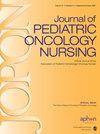测量儿科肿瘤学工作人员的职业倦怠:我们应该使用Maslach职业倦怠量表吗?
IF 1.9
3区 医学
Q2 NURSING
引用次数: 11
摘要
卫生服务人员的职业倦怠令人担忧,因为它对受影响的个人、更广泛的组织和患者都有负面影响。Maslach职业倦怠量表-人类服务调查(MBI-HSS)已被广泛用于评估肿瘤服务中职业倦怠的患病率。MBI-HSS是一种自我报告量表,包括三个子量表——情绪耗竭(EE)、人格解体(DP)和个人成就(PA)。这篇文章报告了第一项研究,以调查MBI-HSS的心理测量特性时,给予儿科肿瘤工作人员。通过七个英国主要治疗中心(ptc)和一个儿童癌症慈善机构招募的203名儿科肿瘤学工作人员完成了MBI-HSS。采用验证性因子分析和探索性因子分析对仪器的因子结构进行检验,并采用Rasch分析来评估该测量是否满足区间水平量表的要求。采用Cronbach alpha评估内部信度。因子分析不支持传统的MBI-HSS的三因素结构,而是提出了七个因素。Rasch分析和alpha系数表明,虽然情感表达和情感表达量表满足群体水平诊断的区间水平测量要求,但情感表达量表却没有。进一步的调查揭示了许多DP物品的“地板效应”。虽然MBI-HSS的情感表达和情感表达量表可用于对在ptc工作的儿科肿瘤学工作人员的研究,但DP量表存在相当大的问题,研究人员在解释该量表的数据时应谨慎。本文章由计算机程序翻译,如有差异,请以英文原文为准。
Measuring Burnout in Pediatric Oncology Staff: Should We Be Using the Maslach Burnout Inventory?
Burnout in health service staff is a cause for concern since it has negative consequences for the individual affected, the wider organization, and patients. The Maslach Burnout Inventory–Human Services Survey (MBI-HSS) has been widely used to assess the prevalence of burnout within oncology services. The MBI-HSS is a self-report measure comprising three subscales—Emotional Exhaustion (EE), Depersonalization (DP), and Personal Accomplishment (PA). This article reports on the first study to investigate the psychometric properties of the MBI-HSS when administered to pediatric oncology staff. Two hundred and three pediatric oncology staff recruited through seven UK Principal Treatment Centers (PTCs) and a children’s cancer charity completed the MBI-HSS. The factor structure of the instrument was tested using confirmatory and exploratory factor analysis, with Rasch analysis applied to assess whether the measure meets the requirements of an interval-level scale. Cronbach alpha was used to assess internal reliability. Factor analysis did not support the traditional three-factor structure of the MBI-HSS but instead suggested seven factors. Rasch analysis and alpha coefficients indicated that while the EE and the PA subscales fulfilled the requirements of an interval-level measure for group-level diagnosis, DP did not. Further investigation revealed a “floor effect” on many DP items. Whereas the EE and PA subscales of the MBI-HSS can be used in research with pediatric oncology staff working in PTCs, there are considerable problems with the DP subscale, and researchers should be cautious in interpreting data from this subscale.
求助全文
通过发布文献求助,成功后即可免费获取论文全文。
去求助
来源期刊
CiteScore
3.10
自引率
0.00%
发文量
0
审稿时长
>12 weeks
期刊介绍:
SPECIAL PATIENTS NEED SPECIAL NURSES
Caring for children with cancer is one of the most technically and emotionally difficult areas in nursing. Not only are you dealing with children and adolescents who hurt, you must reassure and educate families, balance a multitude of other health care professionals, and keep up with ever-changing nursing practice and care. To help special nurses stay aware of the newest effective nursing practices, innovative therapeutic approaches, significant information trends, and most practical research in hematology and pediatric oncology nursing, you need the Journal of Pediatric Oncology Nursing.
The journal offers pediatric hematology, oncology, and immunology nurses in clinical practice and research, pediatric social workers, epidemiologists, clinical psychologists, child life specialists and nursing educators the latest peer-reviewed original research and definitive reviews on the whole spectrum of nursing care of childhood cancers, including leukemias, solid tumors and lymphomas, and hematologic disorders. JOPON covers the entire disease process--diagnosis, treatment, recovery, and survival, as well as end-of-life care.
Six times a year, the Journal of Pediatric Oncology Nursing introduces new and useful nursing care practice and research from around the world that saves you time and effort. Just some of the spirited topics covered include:
Cancer survivorship including later-life effects of childhood cancer, including fertility, cardiac insufficiency, and pulmonary fibrosis
Combination therapies
Hematologic and immunologic topics
Holistic, family-centered supportive care
Improvement of quality of life for children and adolescents with cancer
Management of side effects from surgery, chemotherapy, and radiation
Management of specific symptoms/diseases/co-infections
Medication tolerance differences in children and adolescents
Pain control
Palliative and end of life care issues
Pharmacologic agents for pediatrics/clinical trial results
Psychological support for the patient, siblings, and families
The dynamic articles cover a wide range of specific nursing concerns, including:
Advanced practice issues
Clinical issues
Clinical proficiency
Conducting qualitative and quantitative research
Developing a core curriculum for pediatric hematology/oncology nursing
Encouraging active patient participation
Ethical issues
Evaluating outcomes
Professional development
Stress management and handling your own emotions
Other important features include Guest Editorials from experts in the discipline, Point/Counterpoint debates, Roadmaps (personal insights into the nursing experience), and Proceedings and Abstracts from the annual Association for Pediatric Hematology/Oncology Nurses (APHON) conference.
Your special patients need special nurses--stay special by subscribing to the Journal of Pediatric Oncology Nursing today!
This journal is a member of the Committee on Publication Ethics (COPE).

 求助内容:
求助内容: 应助结果提醒方式:
应助结果提醒方式:


